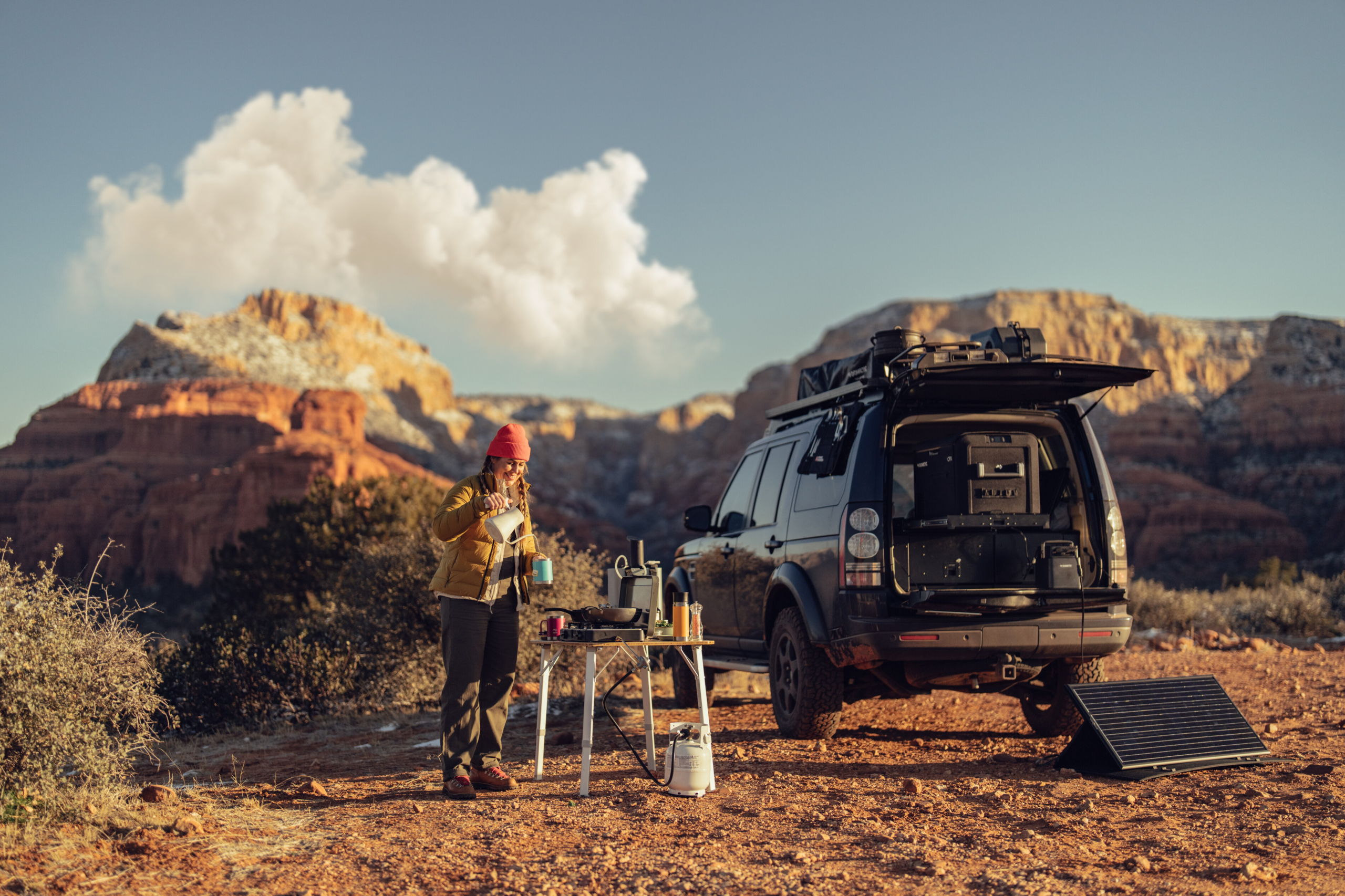
Choosing the Right Power Source for Your Camping Style
7 May, 2025
When you’re off the grid, the right camping power source can make or break your adventure. From rugged overland expeditions to family glamping trips, your camping style determines what kind of portable power solution will keep your gear running and your experience stress-free. In this guide, we break down the best power options for every type of camper—so you can stay charged no matter where the road takes you.
The Basics
Assuming you don’t avoid electronics altogether, you will need to power or charge devices. How much power do you need and how the power flow works. Typical power ratings for electronic appliances used while camping will give you Amps consumption (current) and voltage in AC (Alternating Current) or DC (Direct current). See the example below of a Dometic Fridge Freezer that consumes:
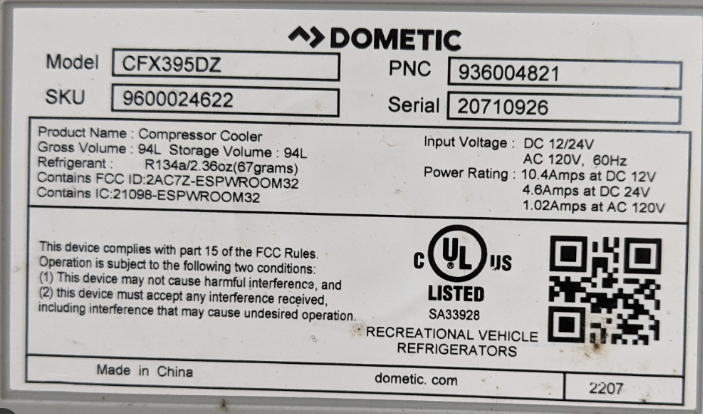
Power sources such as batteries will have a label that indicates the voltage and capacity. In the example below is 12.8V and 100Ah (Amps per hour). Therefore, in theory, with that battery you could run the fridge for approximately 9.6 hours.
100Ah / 10.4A = 9.6hours
Power consumption of an electronic device is often measured in Watts following this formula.
Power (W) = Current (A) x Voltage (V)
So on the Fridge example:
10.4Amps x 12V = 124.8 Watts
So if the device gives you a measurement in Watts, simply divide by the voltage to get the current.
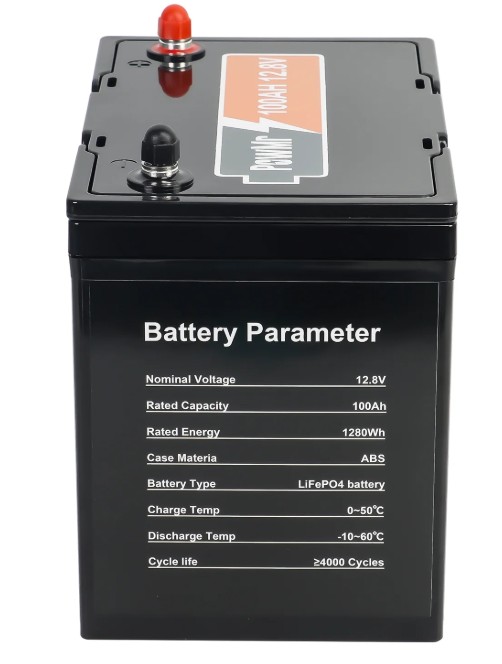
The first thing to do is to identify what appliances you need to power, how much power they consume. Each electronic appliance will have a label that says the power rating. Here is a list of some popular electronic devices used for camping and their power requirement:
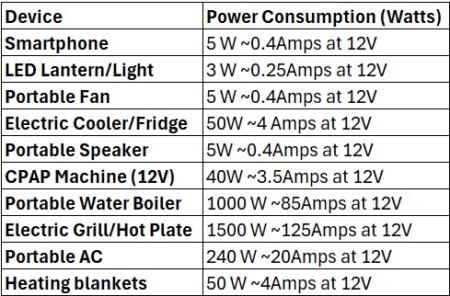
Notice that devices with lights and screens have low consumption, cooling devices have medium consumption and heating devices are high consumption. Minimizing the electric devices that have heating elements is important to reduce the overall electrical consumption. Propane and diesel are often used as a more efficient and cost-effective way to heat elements for cooking and keeping you warm.
Power Flow
The simple way to set up power is to charge batteries from an external power source like solar panels or plugged into the wall or a generator. Then run all the devices from the batteries. This means that if you have solar panels on the roof of the vehicle or tent and you want to have power inside of the tent, you must run the electrical charge from the panels down to the battery location (Typically under the hood or hidden somewhere inside of the vehicle) and then back up onto the tent.
The Backpacker: Lightweight, Essential-Only Power
Camping style: Hike-in campsites, multi-day treks, solo adventures
Ideal power solution: High-capacity USB power bank or lightweight solar charger
When every ounce matters, a 20,000 mAh power bank offers just enough juice to keep your phone, headlamp, or GPS alive for a few days. For extended hikes, consider a USB solar panel that straps to your backpack.
Lightweight power tips:
The Weekend Warrior: Quick Setup, Easy Charging
Camping style: Short weekend trips, car camping, casual campgrounds
Ideal power solution: Mid-sized lithium power station or high-capacity power bank
For short getaways, a portable power station (300–500Wh) will easily handle phones, lights, Bluetooth speakers, and cameras. Pre-charge it at home, complement with a portable solar panel and you’re set for the weekend.
Why it’s perfect:

The Overlander: Rugged, Reliable, and Solar-Ready
Camping style: Long-term off-road travel, rooftop tent setups, remote locations
Ideal power solution: High-capacity portable power station with solar panels
Overlanders require gear that’s durable, scalable, and ready for multi-day isolation. Use a portable battery system charged by solar panels and the vehicle’s alternator. Use firewood for outdoor heating, propane for cooking. A 12V 100Ah battery would be sufficiently supported by a 90-200W solar panel to run a fridge, lights, handheld electronics. Add power and solar panels as needed.
Key features to look for:
PRO-TIP: Mounting solar panels on your roof rack can be a great use for unused real state. Some tents like the Nova have stronger struts and mounting points that make it easier to set up panels. Keep in mind this forces you to park in the sun to keep the battery charged. Ads weight to the top shell of the tents which can make it harder for tents to open. Consider there will be cables dropping from the roof of the tent to the place where the batteries are stored and wires back into the tent if you want power on the tent. Consult with a professional to do this safely.
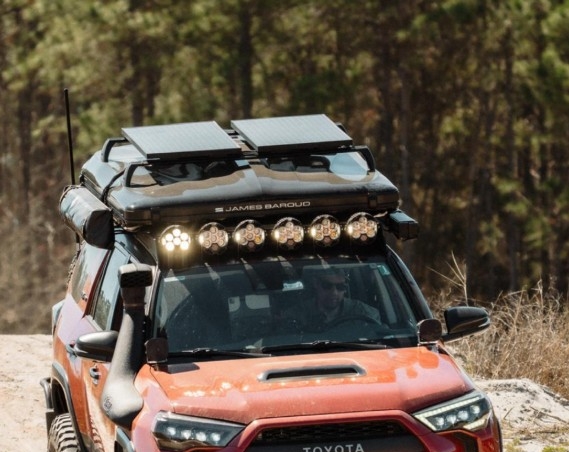
The Glamping Adventurer: Comfort Without Compromise
Camping style: Family camping, luxury base camps, longer stays
Ideal power solution:High-capacity solar generator kits
For glampers who want to power string lights, electric stoves, laptops, and even coffee makers, a full solar generator system with a 1000–2000Wh battery and efficient solar panels is ideal.
Power perks for glamping:
PRO-TIP: always be prepared to charge using 120V (wall outlets) as they are much faster than charging with solar panels. There are more chances than you think in which you will be able to find a wall outlet to charge your batteries at the campsite, service station, or some random place.
Final Thoughts: Match Power to Purpose
Every camper is different—and so are their power needs. Whether you’re exploring off-grid with your rooftop tent or spending a weekend by the lake, choosing the right portable power source for camping helps you travel safer, smarter, and more sustainably.
At James Baroud, we engineer outdoor solutions that match your spirit of adventure. From high-performance rooftop tents to camping accessories designed for real-world use, we’re here to power your journey—on and off the road.
